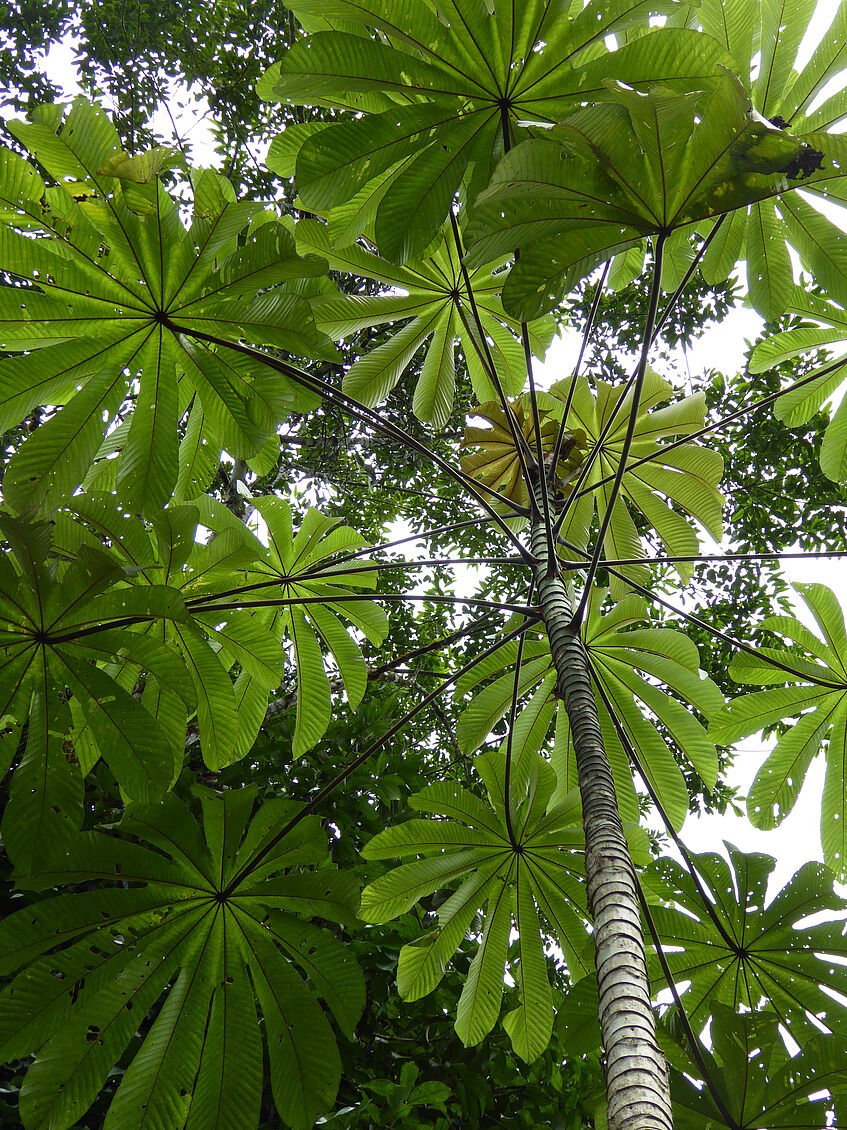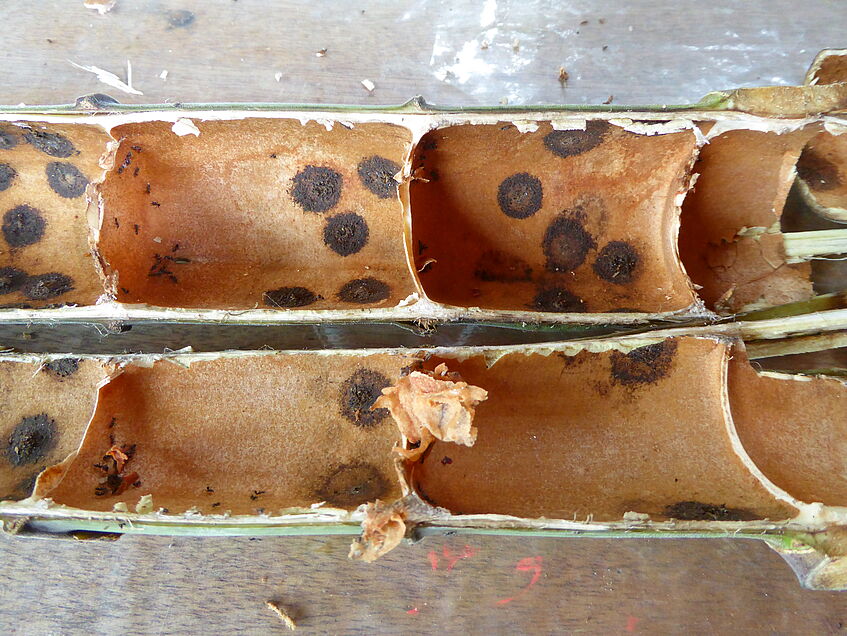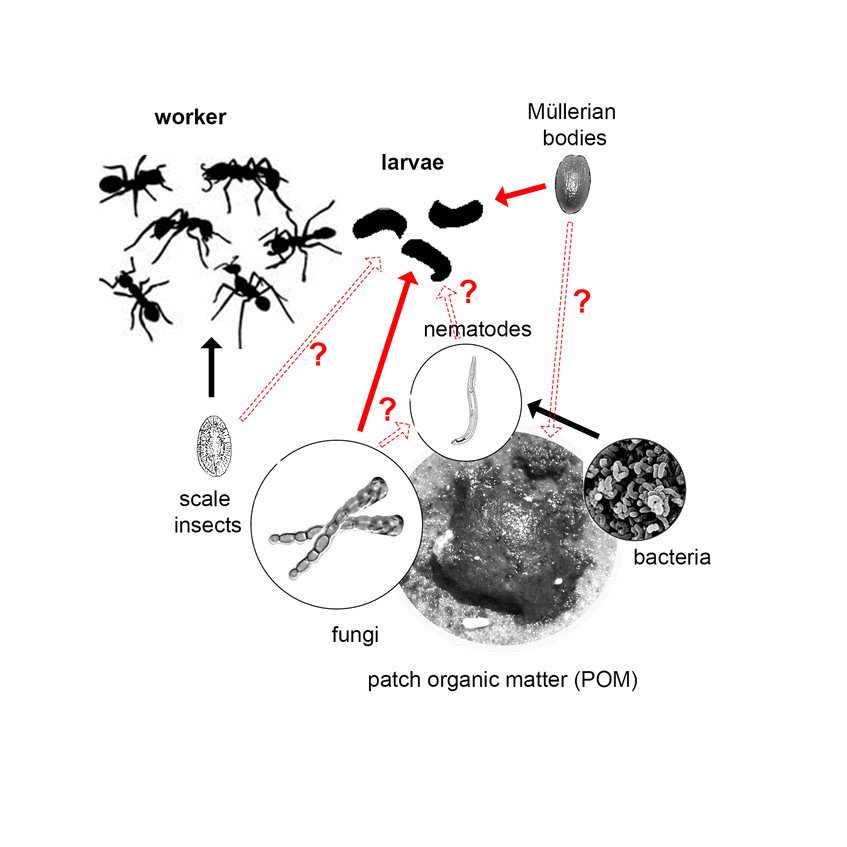Species interactions and their impact on nutrient recycling in ant-made fungal patches
- FWF-Projekt P 31990-B
- 2/2019–6/2024
- Projektleiterin: Dipl.-Biol. Dr. Veronika Mayer
- Mitarbeiter: Mag. Max Nepel
Verónica Barrajón-Santos, MSc
Stefanie Pfattner

Habitus Cecropia obtusifolia © Veronika Mayer

Cecropia stem inhabited by Azteca constructor with black fungal patches © Veronika Mayer

Nutrient flux between worker, larvae, food bodies, scale insects and patch organisms (bacteria/archaea, fungi, nematodes). Solid arrows indicate the flux, which has been observed in other ant-plant associations. Dashed arrows with question marks are fluxes, we are analyzing in this project. © V. Mayer
Ants can comprise up to 50 % of the arthropod biomass in the canopy of tropical rainforests. One of the keys to their success is their symbiotic relationships with plants. Usually tropical ants living in a symbiosis with plants have also strong relationships with fungi cultivated in so-called fungal patches. The ants protect and nourish the fungi and occasionally feed hyphae to their larvae. In addition to fungi, the ant-associated patches are inhabited by nematodes, bacteria and archaea, presumably comprising a community with extensive cross-species interactions. They are thought to have important functions in nutrient recycling and availability, however the exact processes and associated nutritional benefit(s) to the ants remain unknown.
In this project, we will investigate how the fungal patch community contributes to macronutrient recycling, nutrient provision of the ant colony, and, consequently, to the stability of the ant-plant system.
More specifically, we plan (1) to characterize the species diversity in fungal patches including the, to date, largely unknown microbial community; (2) to explore whether fungal patches are ‘hotspots’ for the breakdown and transformation of complex organic molecules into readily usable compounds; (3) to investigate if the patches serve as nutrient-storage reservoirs which are which are refilled through the recycling of ant waste continually deposited onto the patches; and (4) to ascertain that this reservoirs are exploited by the ants for food. Our model system – Cecropia plants inhabited by Azteca ants – is widespread in tropical Central and South America. Although it is a textbook example of an ant–plant symbiosis, the fungal patches have so far been overlooked. To elucidate their function, we will use four complementary approaches:
- (1) identification of the patch community with culture-independent molecular methods;
- (2) analyzing the contribution of atmospheric N2 to the total N;
- (3) examining the breakdown and transformation of complex organic molecules into readily oxidizable nutrients;
- (4) investigating the complex nutrient flux between patch organisms and ants.
Clarifying the function of ant-made fungal patches in ant–plant symbioses may help to understand how, despite their small size, ants are among the most successful organisms in tropical environments.
This project is conducted in close collaboration with Prof. Dr. Andreas Richter (Division of Terrestrial Ecosystem Research – TER) and Dr. Dagmar Woebken (Division of Microbial Ecology – DOME) from the Centre for Microbiology and Environmental Systems Science, University of Vienna, Austria.
